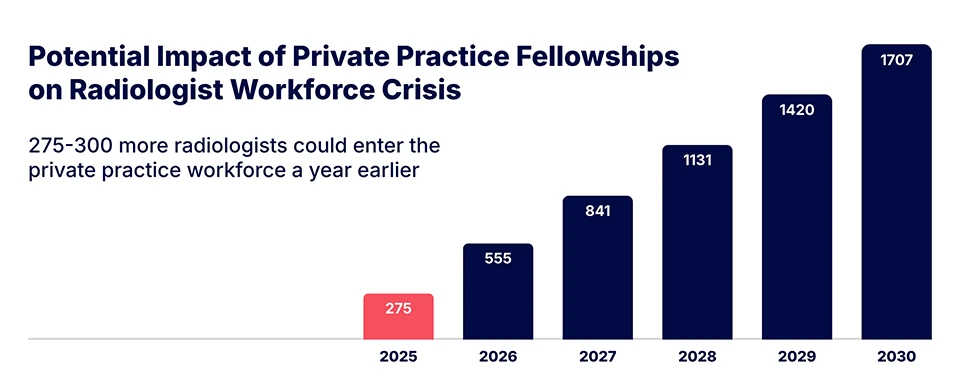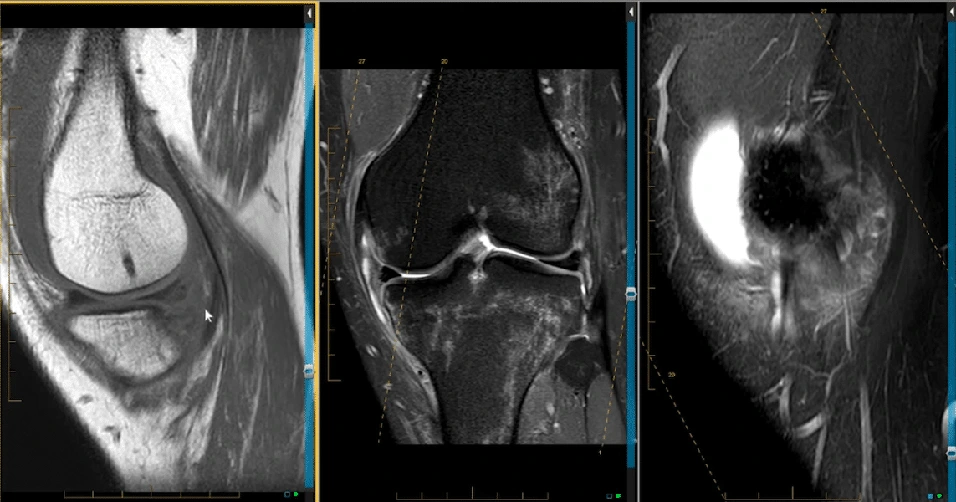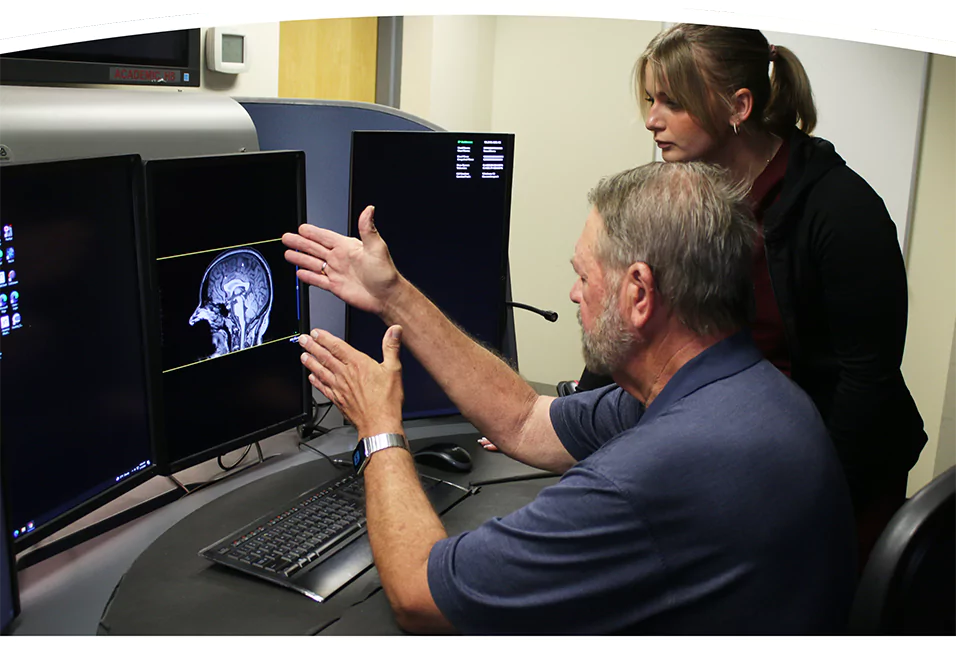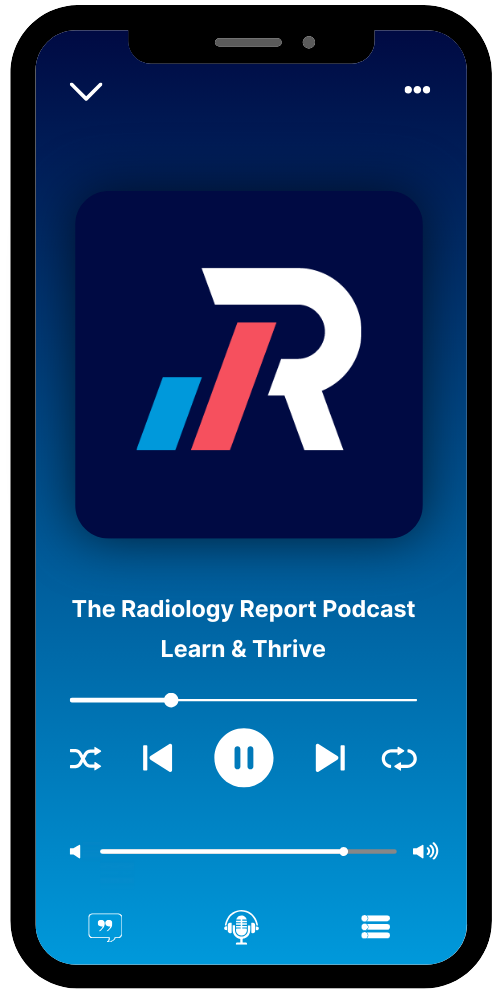Congratulations, you have made it. We often downplay our own achievements, especially in medicine, where imposter syndrome runs rampant. But now that you are a radiology resident, expunge all doubt from your mind about this irrefutable fact: you’ve made it.
You’re officially in the dark room club and let me help you get settled in with this guide on what I think are things you should expect as a new radiology resident. This advice is not a textbook and as such will try not to quote papers or throw abstract theory at you. This is just a distilled version of all the tips I wish someone had told me when I started. I will offer practical advice, share some hard-earned lessons, and throw in a few gentle warnings just to keep it interesting. Think of this as an addendum to your official induction, your unofficial “Introduction to Radiology” handbook, written by someone who’s been through radiology training and lived to tell the tale.
Start With People, Not Protocols
You might be tempted to impress everyone straight away with your radiology knowledge or your work ethic, but I’d also recommend putting in some effort to get to know the people who you are going to work with for the next few years. Be friendly with the radiographers, thank the porters, and strike up conversations with the people who actually keep the hospital running.
When you project a helpful persona, people notice and the good karma piles up. One day when you desperately need help, and time is of the essence, you’ll find that people are ready to offer it quickly and very few things compare to that feeling.
Communication Is a Superpower
Please never believe the stereotype of the basement-dwelling radiologist who never talks to anyone (But you are allowed to laugh if you are watching a Glaucomflecken video!). Radiology is all about communication (written, spoken, or on the phone) because your astute observations and insightful conclusions only matter if they reach the right person, clearly and on time.
Getting into the habit of tailoring your report to the referring clinician early in your career is a great way to level up quickly. While medics might need help confirming or excluding a diagnosis, an orthopaedic may be looking for a surgical target. Phrase your reports like you're helping a colleague or answering a clinical question, not passing judgment on the patient’s anatomy and pathology.
The term “Clinical correlation advised" should not be used as a crutch for sitting on the fence But it can be useful to explain that uncertain imaging findings are not definitive on their own and therefore require input from clinical or laboratory parameters. In short:
- Tailor each report to the referring physician’s needs.
- Avoid hiding behind phrases like “clinical correlation advised.”
- Focus on clarity and clinical relevance over technical jargon.
The better you communicate, the more your reports matter.
Books: How not to drown in the ocean of textbooks
I know for a fact that picking the “right” radiology book is where most of us waste a criminal amount of time. We buy five, read half of three, and then panic-scroll PDFs the night before on-call. If that sounds familiar, believe me you are not alone. The honest truth that most of us accept after several years of struggling on this path is this: most books say the same things, just dressed up in different fonts and figure legends. So it’s a good idea to stop chasing the FOMO demon and accept that you don’t need the most detailed books for every subspecialty at this early stage in your career.
Core Radiology is my go-to recommendation for building your foundation. Concise, well-structured, beautifully illustrated, and hits all the right topics without overloading you. Stick with it and do not give in to the FOMO-shaped self doubt that tries to creep in every month. If you want to compare it to some of the more popular textbooks to make your own informed choice, I respect that. Check out Grainger and Allison and/or Brant and Helm’s.
If you want to level up in certain subspecialities or modalities, I do have a few recommendations:
- Chest X-Ray Survival Guide is excellent and you’ll really get CXRs after this.
- For MSK radiographs, I recommend a delightful combination of Accidents and Emergencies: A Survival Guide and Helms’ MSK which are great for beginners. Osborne (Resident’s Edition) is excellent for neuro and much less scary than the full version.
- For an introduction to Ultrasound, Practical Ultrasound: An Illustrated Guide gets the job done way better than the thick tome that is Rumack.
Beyond the Books: Your Digital Learning Arsenal
Of course, Post-COVID, we basically got thrown headfirst into the digital deep end - and not surprisingly, radiology residents and trainees learned to swim pretty well.
On-demand recorded lectures, online question banks and PACS cases, and virtual conferences are no longer optional extras. They're now baked into how most of us learn. You can pause, rewind, rewatch which can be a life-saver perfect for those moments when someone explains a complex lung pathology in warp speed and you’re still stuck trying to find the hilum.Let’s go through my of my favourite digital resources:
Radiopaedia.org
If you haven’t already fallen down the Radiopaedia rabbit hole, are you even a radiology resident? Massive, free, full of real-life cases and constantly updated by a veritable army of volunteers determined to preserve radiopedia’s place as the best free radiology resource. It’s great for brushing up differentials, comparing with normal scans and brainstorming that weird lesion you saw on call. This is also where most of us take refuge when our brains freeze mid-report.
Medality (Formerly MRI Online)
This one’s is a different offering: a combination of Video-based lessons which are packed with high-yield scrollable cases. It covers everything from introductions to anatomy and foundational topics to advanced subspecialty focused radiology fellowship certificates. It is a great option if you are looking for someone to walk you through complex radiology cases, radiology courses and want to learn from home or work in your own time or polish your CV with a certificate. You can explore with their free offerings and the Noon Conference and Case Reviews are a great way to get a feel for it. The fellowships and memberships aren’t free, but honestly, there’s almost nothing else out there that even comes close.
RADPrimer
Think of it as your radiology syllabus in app form that has over 7,000 MCQs, case modules, and all organised by subspecialty and training year. It’s structured, tracks your progress, and gives instant feedback. It really took off post-COVID when everyone needed something solid for self-paced learning.
Time Management Should Be a Juggle Not a Struggle
Some people will act like they haven’t slept since the first week of residency but that is not a reflector of any skill or talent that I’d recommend emulating. Figure out how to be efficient, not excessive. Use checklists and reporting templates, create shortcuts in your reporting software, use text based short-cuts and claim every possible means to reduce cognitive load. Plan your day in small chunks whenever you can and aim for 3-4 achievable goals daily.
Reward yourself for small wins, and stop comparing yourself to impossible standards.That’s how you maintain momentum and avoid burnout. And finally, know when to say no. I know we put a lot of pressure on ourselves to say yes to all opportunities and take all the shots we can but there is a cost to burning the candle at both ends. Stay focused on your goals and make the most of available opportunities, but remember to take breaks and have a life outside the hospital.
Yes, exams are always looming in the life of a medical student and resident, but your life does not need to revolve around the fear of these exams. Talk to your seniors, read some blogs, watch some videos or listen to some podcasts to make a flexible schedule which you can stick to long-term. Don’t compare your study hours with others and aim for consistency, not heroics. It’s a marathon so when work gets intense, remember to reduce study targets and when things ease up, ramp it back.
Figure out your radiology learning method
I always think of case-based learning as the cement which holds the bricks of structured learning together. You tend to remember a pneumoperitoneum case much better than a few pages about it but systematic study helps build depth and spot patterns. Use a hybrid method covering both approaches depending upon your circumstances.
If you are working a lot with very little time for structured learning, maintain a case log with your concise reflections which you can then use as glue to hold your concepts together when you sit down to study again. You can save these cases on PACS or even use teaching files to reinforce your text-book based learning. Remember to follow up on your reports - especially for atypical cases or those with nonspecific imaging appearances. Following up on your cases, especially that weird-looking thing you hoped to never see again, is one of the best ways to learn.
Remember to make space for reflective practice too. Speed and volume are great, but every now and then, slow down and think about the misses, the mismatches, and the “huh?” moments. That’s where the real growth happens.This is a nice opportunity to mention another lesson I learned the hard way - making peace with uncertainty and not knowing. That is not incompetence (unless you are the only one who consistently doesn’t know things!). That’s just radiology. Instead of pretending to know or understand, instead of faking till you’re making it, focus on being safe and clear. Use probability based language but keep working on improving yourself so that you can be decisive when it matters.
AI in Radiology is here, but so are we
I have nothing new to add except for what so many experts have already said but I will share my feelings on this in a few lines. While AI might be good at image interpretation, non-radiologists often overlook the broader diagnostic and clinical roles that radiologists fulfil. We perform procedures, attend MDTs, teach, audit, and manage complex workflows that AI cannot replicate end-to-end. Medicine in general, and radiology in particular, is also subjected to the long tail distribution (Reference) with ambiguity, edge-cases and contextual judgement. Last but not the least, legal responsibility will continue to lie with radiologists for the foreseeable future but doctors will retain ultimate accountability for decisions limiting full AI autonomy. More importantly, do not let the fear of AI stop you from making full use of how good they are as tools. Want to look something up? Perplexity might be better and faster than a traditional Google search. Want to do an in-depth reading on a topic? The deep research options are excellent! Want to get a template for a study? ChatGPT can degenerate and tweak templates for you all day for free!
Mastering the Radiology Report: Your Clinical Voice
You've made the diagnosis, but the job isn't done until you've communicated it effectively. Getting good at reporting early on will save you time and earn you respect. There are perennial debates raging about report styles. Structured templates with bullet points and fixed headings are fantastic for consistency early in your career and ensure that you don't miss anything critical. They also make your reports easy for clinicians to scan, however, they can be tricky to use for complex cases with a constellation of findings. Free-form text allows for more narrative and nuance, which can be great for complicated cases with an unusual set of findings or when you want to tell a specific story through your report.
The truth is, most of us end up using a hybrid approach. Start with templates to build consistency, and as you gain confidence, you find ways to add a touch of free-form flair to clarify a point or guide the clinician. The goal isn't rigidity but clarity and completeness because a good radiology report isn’t just a list of findings, it focuses on answering the clinical question clearly and quickly. Keep it concise, skip the jargon, and focus on what matters. An excellent reference is the Radiographics article titled “How to Create a Great Radiology Report”. (Reference)
Checklists are your best friend. Before hitting “done,” develop a mental (or even physical) checklist. Did you check prior studies? Did you look at the lung bases on the abdomen CT? Is the patient's age and clinical history consistent with your findings? Checklists reduce errors, ensure thoroughness, and ease your cognitive load, especially when you're tired at the end of your call. There are many available online, or you can build your own as you learn.
One of the most underrated learning tools is the patient's prior imaging and reports. Not only do they provide crucial context for the current study, but they also offer readily available, high yield opportunities to learn how others have reported similar cases in the past. Pay attention to how they structure their reports, the language they use, how they handle uncertainty, and how they phrase their impressions. Don't shy away from reviewing your own signed reports. If a clinician calls you with a question, reflect on why they needed that clarification. Every interaction is a chance to refine your reporting style. Pro tip: Don't be afraid to borrow phrasing or ideas that resonate with you. It's not plagiarism; it's learning from the masters.
The Journey Continues: Embrace the Ride
So, there you have it - a few tips from someone who’s been through the chaos before. Think of your radiology residency as running a marathon in a foggy maze with grayscale walls. Everyone is running around confused in the beginning with the occasional flashing “What on earth is that?” moments but hidden in some of the shadowy corners are seriously cool cases, golden learning moments, and the satisfaction of knowing that you are making a difference. There’s an entire community of radiologists who want to help so remember the human connections, keep working on your communication, embrace the wealth of digital resources, and learn to manage your time and studies smartly. Most importantly, give yourself permission to mess up, learn, and grow.
You've already proven your ability by making it this far. The imposter syndrome may rear its head every now and then, but you’ll learn to “window” and “magnify” to focus on what is important! It's going to be a great ride.




